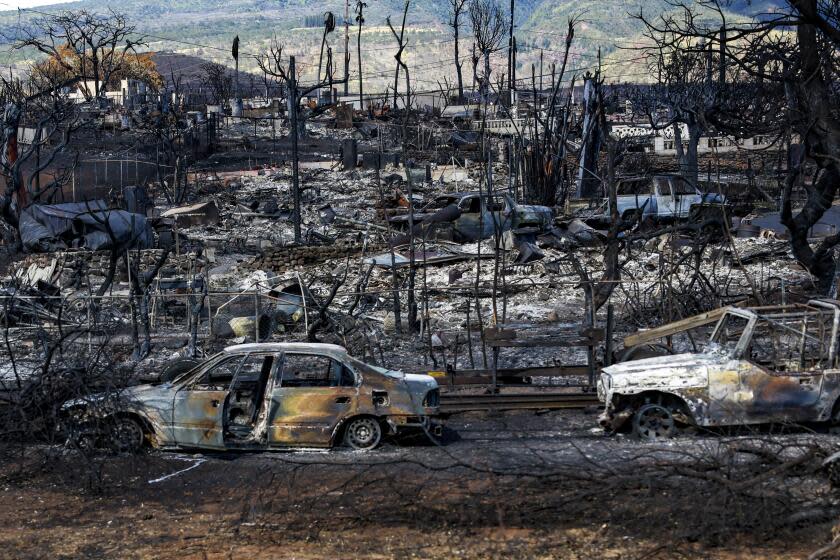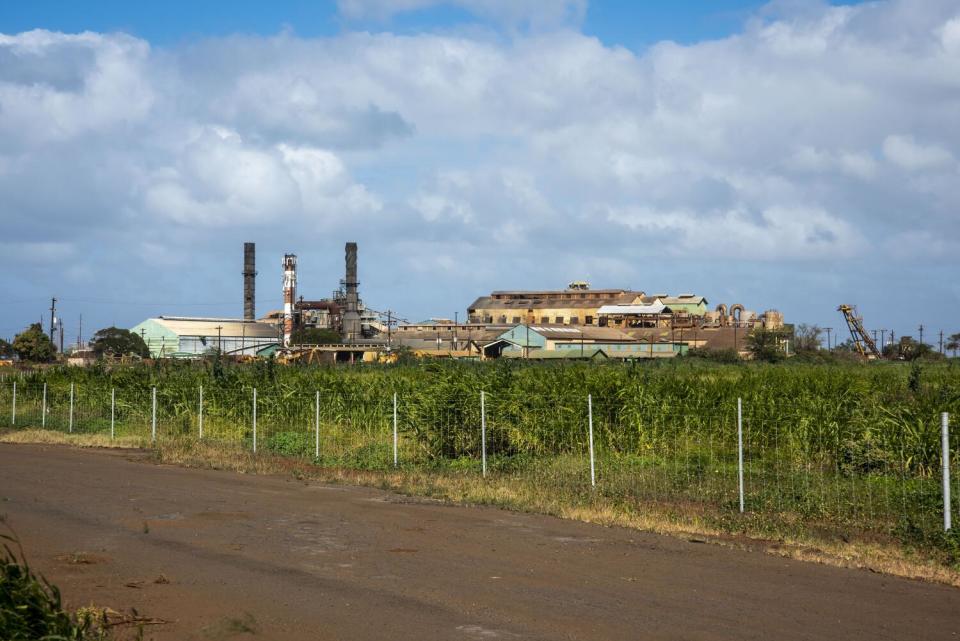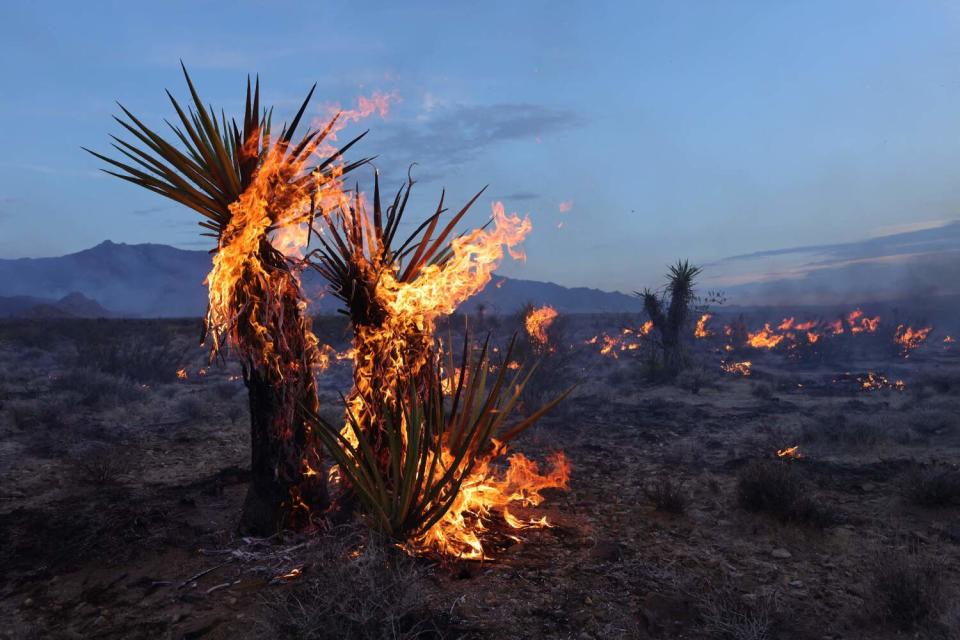Global firestorm: A summer of infernos in Canada, Greece, Hawaii and beyond point to the future

Ash-covered cars still line the highway in Lahaina, Hawaii, where hundreds of people tried in vain to escape from a fast-moving and fatal wildfire, like a scene out of a nightmare.
In Canada, raging fires are still burning through more than 30 million acres of boreal forests, spewing noxious smoke and choking nearby communities with some of the worst air quality on Earth.
And in Rhodes, Greece, more than 20,000 people fled for safety last month as flames fed on overgrown forests amid triple-digit temperatures, threatening historic villages.
While a series of catastrophic wildfires, globe-spanning heat waves and a hurricane’s extraordinary charge toward California have stunned the world in recent weeks, experts say such extreme events will only become more likely in a warming climate.
But rising temperatures are not the only reason for worsening wildfire activity. Development, land-use practices and government policy are also conspiring to create conditions that are ripe for flames — even in seemingly unexpected places.
"We have a lot of fire in our future, and all kinds of environments are going to be subjected to it, including urban areas that thought they were more or less immune," said Stephen Pyne, a fire historian and emeritus professor at Arizona State University. "What doesn't burn is going to be subjected to smoke."
Read more: Ignored warnings, hubris, slow response fueled America's deadliest wildfire in a century
It’s something Pyne has come to think of as the "Pyrocene" — a new age of fire activity in the planet's history not unlike the Ice Age.
Last year, a United Nations report warned that the number of extreme wildfires is expected to increase 50% globally by the end of the century, and that governments are largely unprepared. Even the Arctic — previously all but exempt from the threat — faces growing wildfire risk because of climate change and other factors, the report said.
"We keep thinking it's a fluke — it's not," Pyne said.

On Maui, strong winds from a nearby hurricane met with drought-dried vegetation on the western side of the island to fuel the intense fire in Lahaina, which quickly spread to homes and structures as embers swirled in 80 mph gusts.
But while climate change played a role in some of those elements, the disaster was also compounded by government policies, communication failures and other issues, said Lisa Benton-Short, a professor of geography at George Washington University who studies urban and environmental issues.
"Climate change doesn't really explain the catastrophic nature of the fire, and for that I think we have to look deeper at a variety of social, economic and political factors that have exacerbated vulnerabilities," she said.
Read more: Mapping how the Maui fires destroyed Lahaina
For one, the blaze fed on invasive grasses that populated abandoned sugarcane plantations, which hark back to when the island's colonizers built a booming sugar industry on the backs of immigrant laborers. Hawaii's last sugar plantation closed in 2016.
Evidence is also emerging that exit route closures, communication breakdowns, utility failures and a lack of sufficient warnings may have cost precious time and played a role in the fire's lethal force.
Benton-Short said such problems highlight factors that could leave other places vulnerable to similar disasters.
"One of the things that's happening with climate change is that we're also seeing places experience things that they haven't had before," she said. "Yes, Hawaii has had some issues with wildfires, but nothing like this — nothing like the firestorms that Colorado and California have experienced over the last seven to 10 years. That wasn't forefront on their minds in terms of being disaster-ready."
Even in fire-prone California, miscalculations can occur. The state's ever-larger blazes have been heavily linked to forest management policies that allowed for a buildup of vegetation that acts as fuel for fires.
Similarly, human population growth and the expansion of communities into heavily forested areas is also increasing risk levels. The California town of Paradise — which was razed in the 2018 Camp fire — was built in the wildland-urban interface, an area of extreme risk for wildfires. The fire killed 85 people. As in Lahaina, many died trying to evacuate.
"This is how human-induced issues magnify, or compound, what begins as an environmental disaster," Benton-Short said. "It becomes such a bigger disaster because of some of these things you weren't prepared for."
Read more: Maui fires take a toll on survivors' mental health
Indeed, while the horror that befell Hawaii was the product of a perfect storm of conditions that converged into a deadly fire, many experts say it will keep happening.
"We are seeing an increased frequency of these disasters .... and unless something changes dramatically — and there's no evidence that it is going to in the near future — we're going to see more of these," said Daniel Swain, a climate scientist with UCLA.
Many future blazes will occur in typically fire-prone places, such as California, Colorado and other parts of the semi-arid West, Swain said. But there will also be fires in places where people are less prepared — where the risk is typically low, but under the right conditions, can become extreme.
For evidence, Swain pointed to the recent increase in wildfire activity in different types of ecosystems — from the forests of Canada to the Mojave desert in California; from North Africa to the Greek islands to the city of London.
"We're starting to see the emergence of much greater fire activity in places where fires are conditionally possible but less common," Swain said. The next fire, for example, might be somewhere in Appalachia, or downwind of the Pine Barrens or in a beach town in New Jersey, or in Wisconsin or the Upper Peninsula of Michigan, he said.
Read more: Anatomy of a monster: Maui fire seemed under control. Then it exploded with lethal force
The recipe for such disasters will inevitably vary from place to place and event to event, and could depend on factors such as forest management, urban development, invasive species and drought conditions, some of which are being heightened by human-caused climate change.
Places that may have had a 1-in-1,000 chance of such a fire in the 20th century might now see risk levels closer to 1-in-100, Swain said.
"That still is unlikely, but it's a lot less unlikely," he said. "And if there are hundreds of places at risk of a 1-in-100 event, now all of a sudden you're going to start to see it happening more and more often."

Pyne, of the University of Arizona, referenced the Great Smoky Mountain wildfire complex of 2016, which caught locals by surprise when it sparked near Gatlinburg, Tenn. The fire spread amid extraordinarily dry conditions and strong winds, ultimately killing 14 people and charring thousands of structures.
The advancement of wildland and urban conflagrations is being accelerated by global warming, Pyne said, which is like "putting the system on steroids." But he added that worsening wildfires are also influenced by the ways in which humans interact with the landscape, manage agriculture and organize their cities and economies, among other choices.
"It's not just that it's either land use or climate that's affecting it — they're both being shifted by our conversion to fossil fuels and fossil biomass" such as asphalt, plastics and petrochemicals, he said. "My sense is that that has accelerated what I regarded as a slow-motion Pyrocene into a fast-maturing one."
Read more: 'There are bodies everywhere': In devastation of Maui fire, California's past horrors lurk
There are ways to contend with increasing fire risk, including reducing reliance on fossil fuels and other drivers of global warming, he said.
Though individuals may have little control over the larger climate crisis, they can also take such steps as home hardening, vegetation management and emergency planning to help avoid a worst-case scenario.
At the local level, rethinking how communities are developed, how utilities operate and how evacuations are managed can save lives. Improved hazard and risk mapping can also help, as can targeting efforts to areas where they are most needed and would be most beneficial, Benton-Short said.
"I hope this begins a conversation about just how many intersecting issues we see that really compound a disaster," she said. "This is not just Mother Nature — society has had some impacts that have magnified, or exacerbated, the impacts that these disasters have."
Still, such work is all the more critical as the dice are being loaded by an ever-warming world, said Swain, of UCLA.
"What happened in Hawaii could have happened 40 or 50 years ago," he said. "But due to what has happened with the abandonment of plantations, what has happened with the expanded suburbs, what has happened with climate change — it's just that much more likely to happen now."
This story originally appeared in Los Angeles Times.

